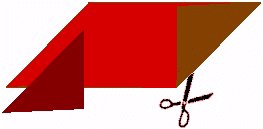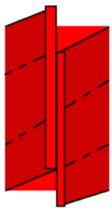...and isn't
for Others
Pipe It!
And I don't mean squeezing a plaid bag!I start a lot of these pages this way, and this page is no exception: with a definition. I've heard a great many things referred to as 'piping', and I've heard piping called by the wrong name on many occasions. So let's clear up the mystery, shall we?
Piping. n. A type of garment trim made by encasing a length of cord inside a strip of bias-cut fabric.
My first experience with piping was a bit of a nightmare. This page will give you a few points on making and using piping in a way that won't turn you into a psychopath, or make your future progeny congenital mouth-breathers.
Making the stuff
The first mistake most everyone makes with piping is purchasing it. If you've done this, I would like you to strike your forehead and say "DUH"... I'll wait. Done? Make your piping, and for three reasons:
- It's demonstrably cheaper
- There are more colors available in the fabrics than there are in the notions
- You can have piping made out of something other than cotton
Starting Out
I usually make my piping using bridal satin (if I'm feeling rich) or tafetta (if I'm not, though bridal satin wears better).

| For this example we'll assume the fabric is 45" wide: start with half a yard and fold the corners as shown and cut off the resultant triangles. |

|
You'll end up with a shape approximating the next illustration. Draw some lines about 2" apart as shown and cut one long continuous (ain't it great?) strip. |
Other tips that can make using piping easier
- Unthread your serger and run the piping through, letting the cord ride against the edge of the presser foot to trim off the raw edge. You'll get a seam allowance on the piping that's an even 1/2".
- Don't try to put all garment layers together and sewing everything at once. Make the piping, sew the piping to one piece, then add the next piece and sew the seam. Trust me: unless you have time to burn, it's better this way.
- Anytime the line of piping intersects a seam, cut the cord (but not the outer fabric!) back past where the stitching will go. It reduces bulk in the seam. The same goes if you have to overlap two pieces: pick one piece and trim the cord out.

